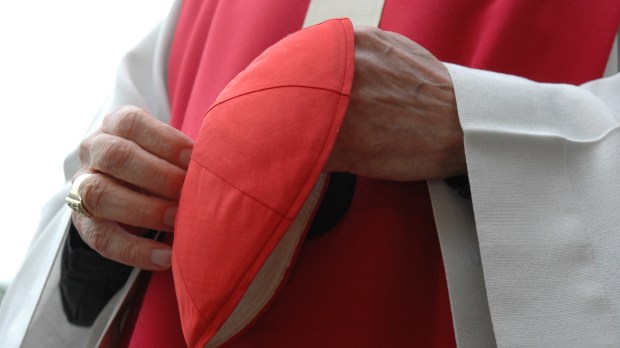Tuesday 28 June 2022
1. United States: Supreme Court sides with praying coach
2. Church in Germany lost 1,000 Catholics per day in 2021
3. Mexican Cardinal detained by drug traffickers
4. The “Jesus boat,” an interesting relic on the shore of Lake Tiberias
5. A pilgrim recounts her slow progress on the Via Francigena in Sicily
~
United States: Supreme Court sides with praying coach
On Monday the United States Supreme Court said that a high school football coach who knelt and prayed on the field after games was protected by the Constitution. The court ruled 6-3 for the coach. The opposing judges said there was evidence that Coach Joseph Kennedy’s prayers at Bremerton (Washington) High School had a coercive effect on students and allowed him to incorporate his “personal religious beliefs into a school event.” One dissenting judge also said the decision “sets us further down a perilous path in forcing states to entangle themselves with religion.” However, the judges who ruled in favor of the coach said his prayers happened after the games were over so he wasn’t responsible for the students and was free to act as he wished. This decision continues a pattern in which the court has ruled in favor of religious plaintiffs. For example, last week the court ruled that Maine can’t exclude religious schools from a program that offers tuition aid for private education.
Associated Press, English
In 2021, 359,338 people left the Catholic Church in Germany, which is more than 1,000 people per day, and 137,948 more people than the previous year. This record was commented on by Bishop Georg Bätzing, president of the German Bishops’ Conference, who said he was “deeply shaken.” He analyzes these massive departures as a sign of the feeling of abandonment, from which many German Catholics suffer due to the lack of priests, but also as a consequence of the abuse crisis. Mass attendance is also at its lowest: only 4.3% of Catholics attended religious services in 2021, compared to 5.9% in 2020 at the height of the pandemic. Archbishop Bätzing believes that the idea that “the churches will fill up again or that the number of faithful will increase again” is a thing of the past. Only 1,456 people were admitted to the Church in Germany in 2021. Katholisch.de notes that the German Evangelical Church is experiencing the same problem and similar declines.
Katholisch.de, German
Mexican Cardinal detained by drug traffickers
The Archbishop of Guadalajara, Cardinal José Francisco Robles Ortega, said that he was detained at two drug checkpoints in the northern part of Jalisco, in Western Mexico. His statement, reported on in the weekly newspaper of the Archdiocese of Guadalajara, comes after a series of unfortunate events in the country highlighting the daily violence related to drug trafficking. These include the murder of two Jesuit priests in the area of Chihuahua, the death of 13 people after a dispute, and the detainment of the Bishop of Zacatecas, Sigifredo Noriega Barceló, by members of organized crime. In a press conference Cardinal Robles Ortega expressed his disappointment at these situations and invited people not to normalize them, despite their daily occurrence. “I believe that we should all be aware that if we do not propose each one of us in our field, in our space, in our relationships, to be builders of peace, of understanding, of reconciliation, we will end up destroying each other,” he said, while calling for authorities to fulfill their role in protecting their citizens.
ArquiMedios, Spanish
The “Jesus boat,” an interesting relic on the shore of Lake Tiberias
Lake Tiberias, also known as the Sea of Galilee, in Israel, is an important pilgrimage destination, as it is where Jesus spent a lot of his public life and where he appeared to his disciples after his resurrection. On the shores of the Tiberias is the Kibbutz Ginosar, which in one of its rooms houses the so-called “Jesus boat.” This boat is a 2,000-year-old eight-meter-long vessel that was discovered in the 1980s when a major drought in Israel caused the water level of the lake to drop dramatically. With the easing of restrictions after the pandemic, tourists can now visit the famous boat again.
Vida Nueva Digital, Spanish
A pilgrim recounts her slow progress on the Via Francigena in Sicily
Rachel Dixon recounts her experience walking the Magna Via Francigena, a route of about 186 kilometers from Palermo, the capital city in the north of the island, to Agrigento in the south. This hiking trail, recognized in 2017 as an official pilgrimage route, is an alternative to the more crowded Camino de Santiago de Compostela. The English journalist, who recalls the astonishment of many Sicilians upon discovering she was a female traveling alone, was struck by the “resplendent” cathedral of Monreale, on the heights of Palermo. After several tourist and gastronomic stops, she reached the cathedral of Agrigento and was able to visit the Valley of the Temples, “one of the most astonishing archaeological sites in the world.” She also remembers the kindness of the elderly men she met in isolated villages, happy to have a visitor with whom to exchange a few words, even in broken Italian.
The Guardian, English

